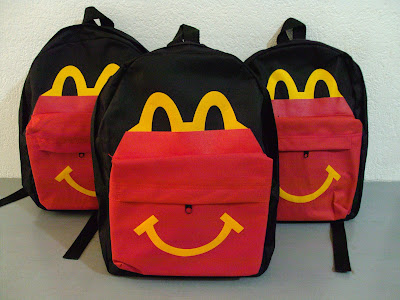EcoWaste Coalition Cautions Consumers vs Lead-Containing School Supplies
A persistent advocate for children’s safety from toxic substances has warned that some school supplies being sold in the market contain undisclosed quantities of lead, a chemical that is known to affect intelligence and behavior.
The EcoWaste Coalition, a non-profit watch group on toxic chemicals, products and wastes, aired the warning as the sale of school supplies soars with the nearing resumption of classes on June 5.
To generate data for its public outreach efforts, the group conducted yet another test buy targeting affordable school supplies sold in discount stores located in Baclaran, Divisoria, Guadalupe and Monumento, where budget-conscious parents go to for their children’s school needs.
“We conducted this year’s test buy against the backdrop of an intensified campaign to promote business and industry compliance to the country’s lead and lead paint laws,” stated Thony Dizon, Coordinator, EcoWaste Coalition’s Project Protect.
Dizon cited the DENR Administrative Order 2013-24 or the Chemical Control Order for Lead and Lead Compounds, which prohibits the use of lead in the production of school supplies, as well as the DepEd Department Order 4, Series of 2017, which requires the mandatory use of lead-safe paints in all preparatory, elementary and secondary schools.
“Eliminating all sources of childhood exposure to lead in children’s environment is necessary to protect their developing brains and to help them realize their full potentials,” he said.
For its latest test buy, the EcoWaste Coalition purchased affordable backpacks, lunch bags, water containers, and assorted stationery items, which were subsequently screened for lead and other toxic metals using a portable X-Ray Fluorescence device.
Out of the 55 items bought and screened, 21, mostly school bags, were found to contain varying concentrations of lead. The rest were found to contain no detectable of lead.
Joining this year’s “dirty dozen” list of lead-laden school supplies were:
1. An orange stainless steel vacuum flask with 40,500 ppm.
2. A yellow thumb tack with 31,800 ppm
3. A yellow “Tigger & Pooh” water container, 21,900 ppm
4. A blue backpack with stop light design, 11,000 ppm
5. A green backpack with ladybug design, 8,619 ppm
6. A small blue bag with “Ben 10” design, 4,094 ppm
7. A pink “Weinite” backpack with alphabet design, 3,754 ppm
8. A green and yellow ”Kakuchuanqi” bag, 2,076 ppm
9. A stationery bag with yellow zipper, 2,034 ppm
10. A green backpack with star design, 1,998 ppm
11. A small blue bag with “Naruto” design, 1,282 ppm
12. A big yellow backpack with “Despicable Me” design, 1,120 ppm
In addition, the EcoWaste Coalition had earlier disclosed high levels of lead in eight out of 20 painted school gardening tools such as hand forks, rakes and shovels with total lead content ranging from 816 to 20,400 ppm.
To prevent children’s exposure to lead and other harmful chemicals, the EcoWaste Coalition advised consumers to: demand complete product information, including information about a product’s chemical composition; refrain from buying school supplies made out of polyvinyl chloride (PVC) plastic that may contain toxic additives like cadmium, lead and phthalates; and avoid products with painted parts or metal accessories unless certified “lead-free” or “non-toxic.”
According to the World Health Organization (WHO), “at high levels of acute exposure, lead attacks the brain and central nervous system to cause coma, convulsions and even death.”
“At lower levels of exposure that cause no obvious symptoms and that previously were considered safe, lead is now known to produce a spectrum of injury that causes loss of cognition, shortening of attention span, alteration of behavior, dyslexia, attention deficit disorder, hypertension, renal impairment, immunotoxicity and toxicity to the reproductive organs,” the WHO said.
WHO has listed lead among the “ten chemicals of major public health concern,” stating that “lead exposure is estimated to account for 0.6% of the global burden of disease, with the highest burden in developing regions.”
-end-
Reference:
http://www.denr.gov.ph/section-policies/viewrec.php?id=4693&main=1
http://www.deped.gov.ph/orders/do-4-s-2017
http://www.who.int/ceh/publications/childhoodpoisoning/en/







Comments